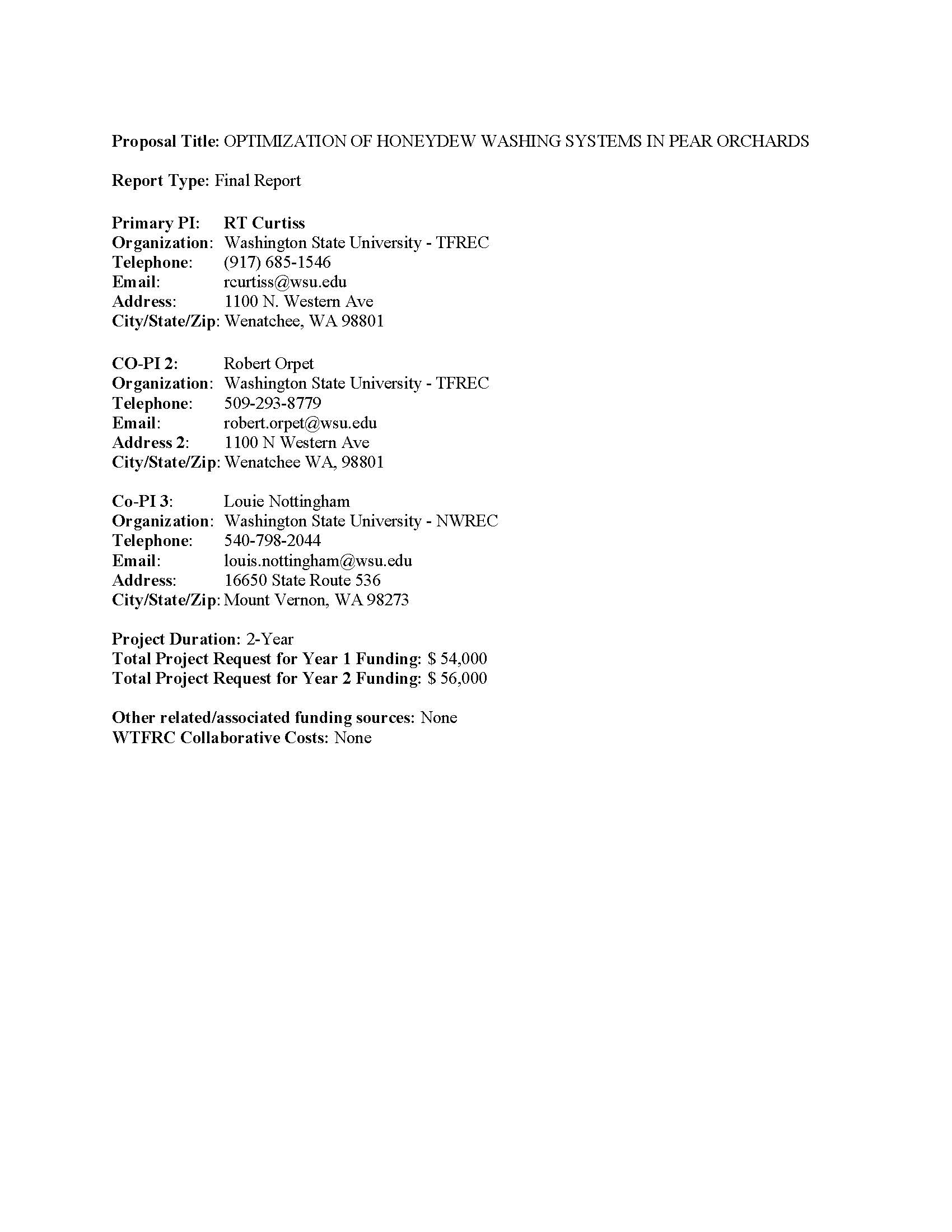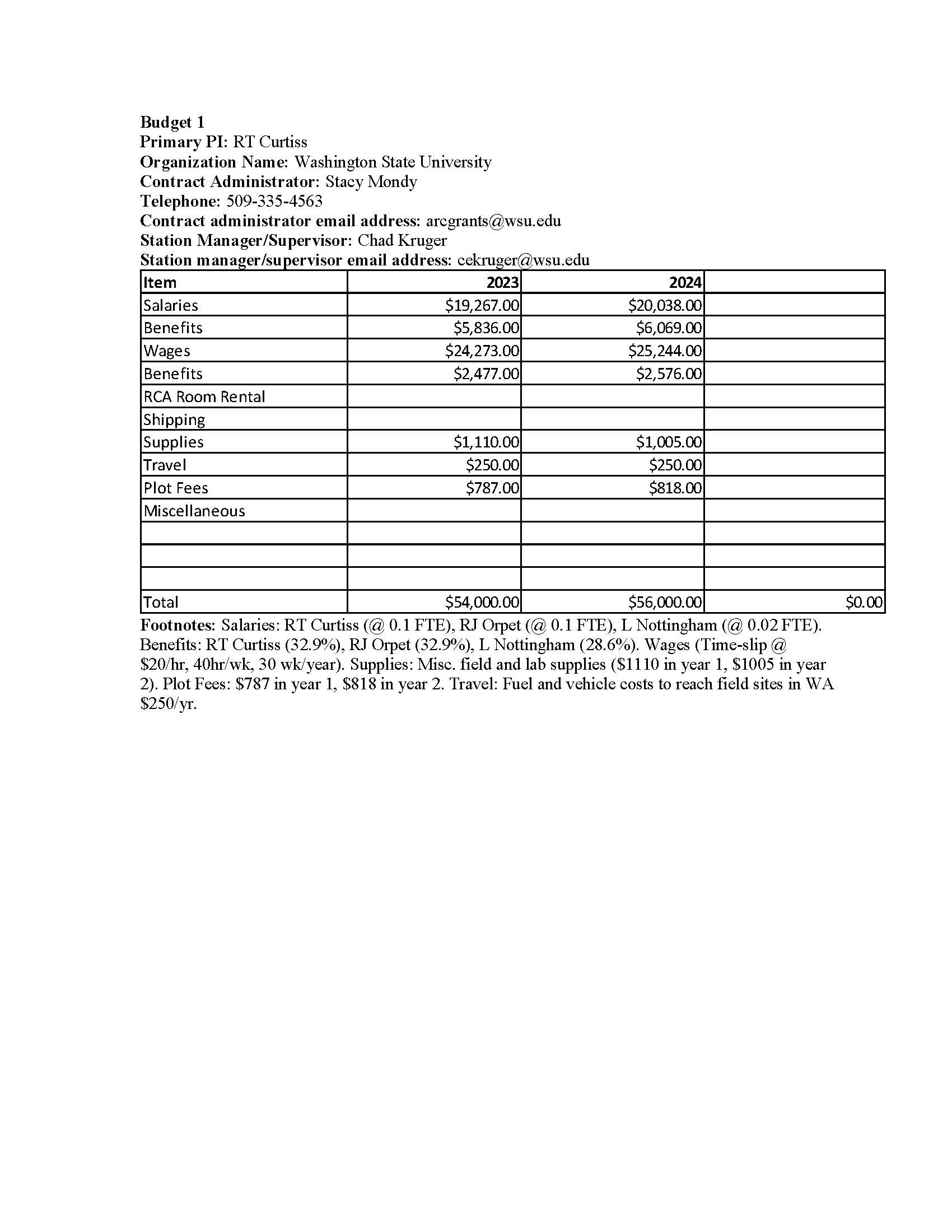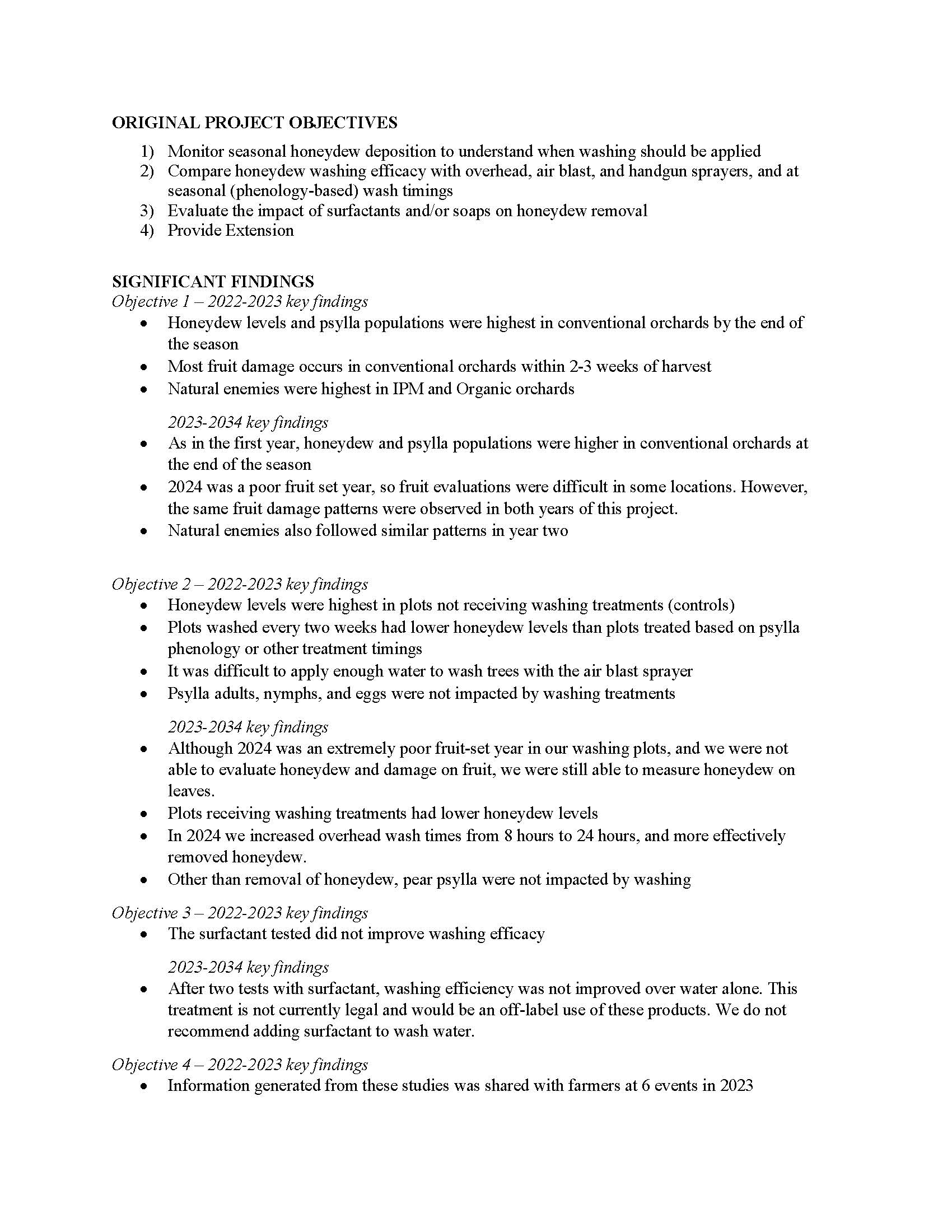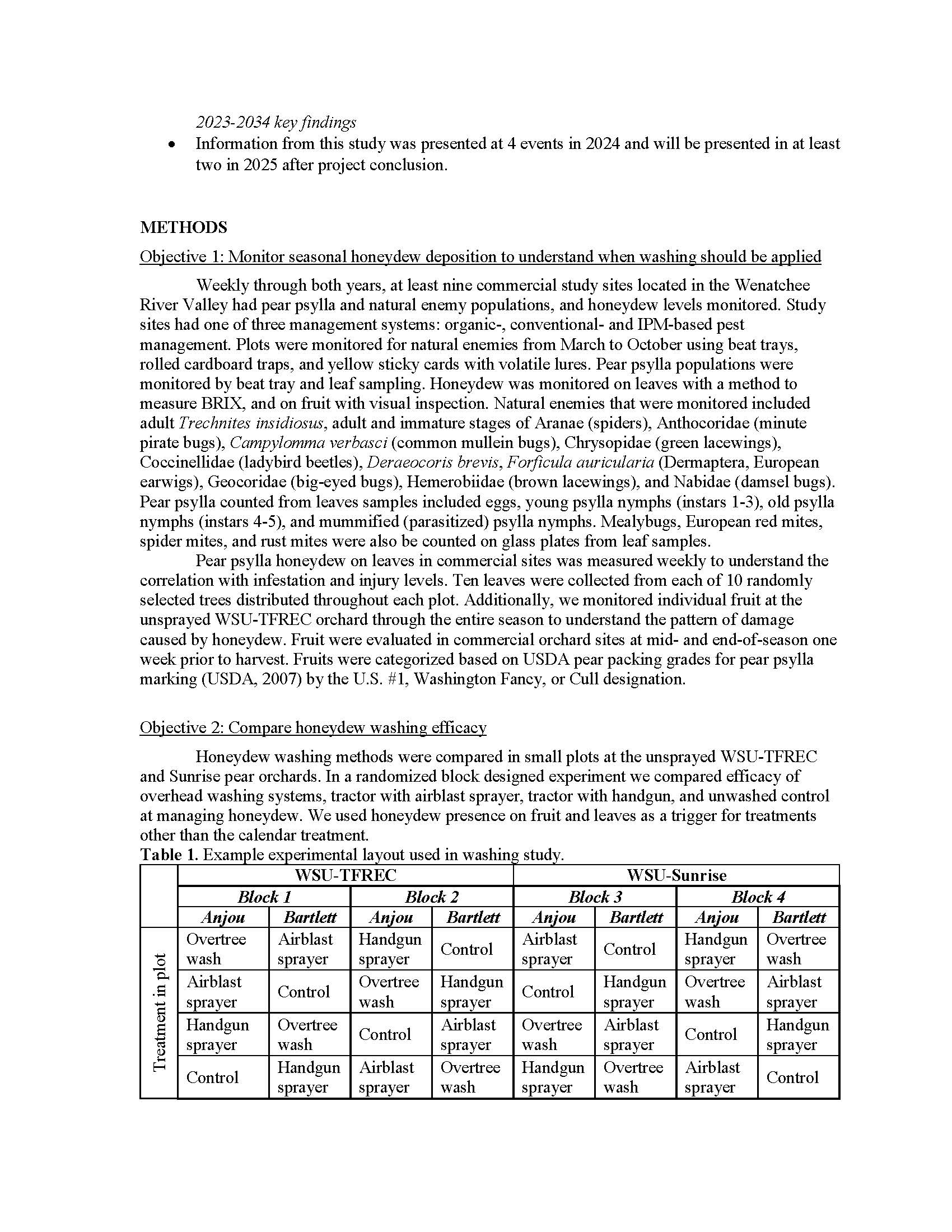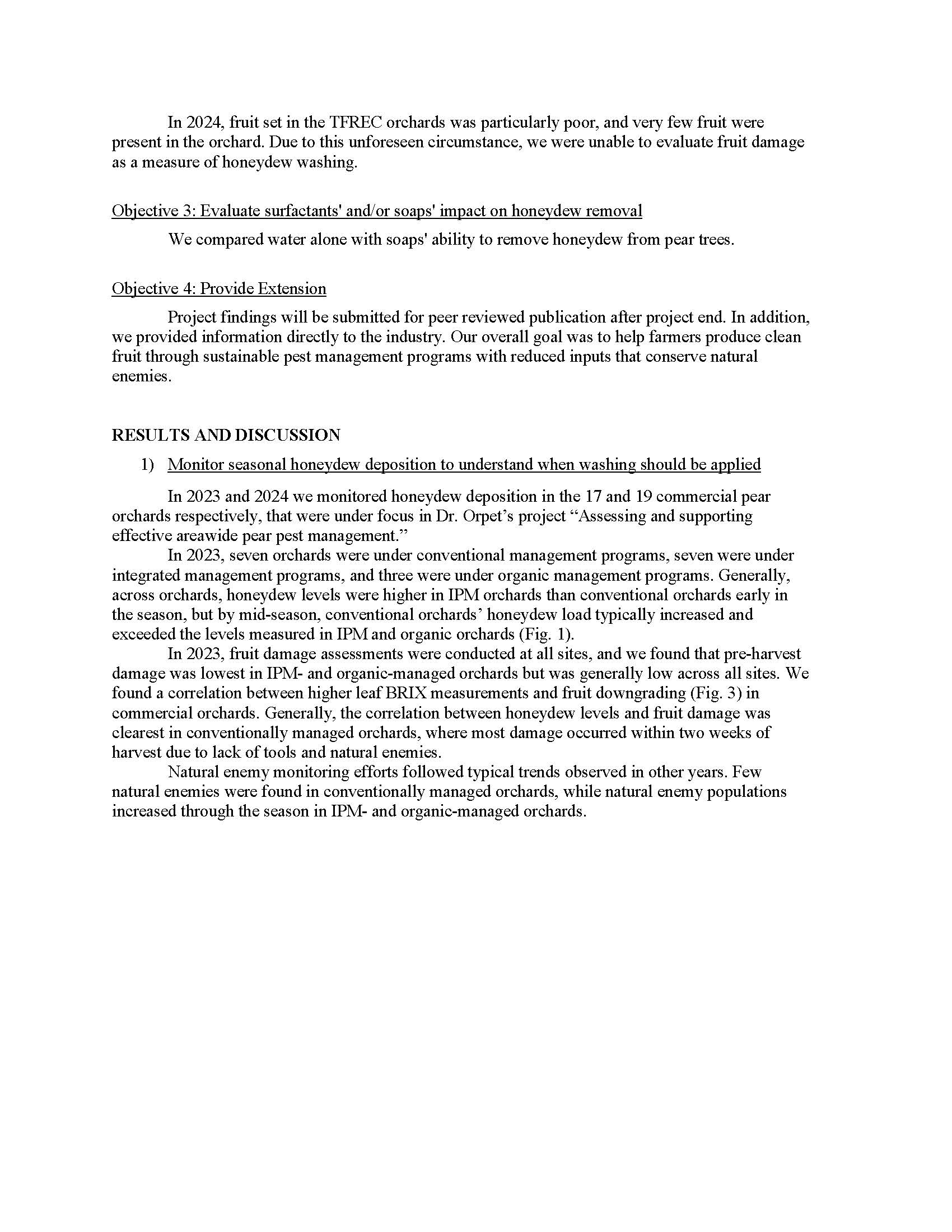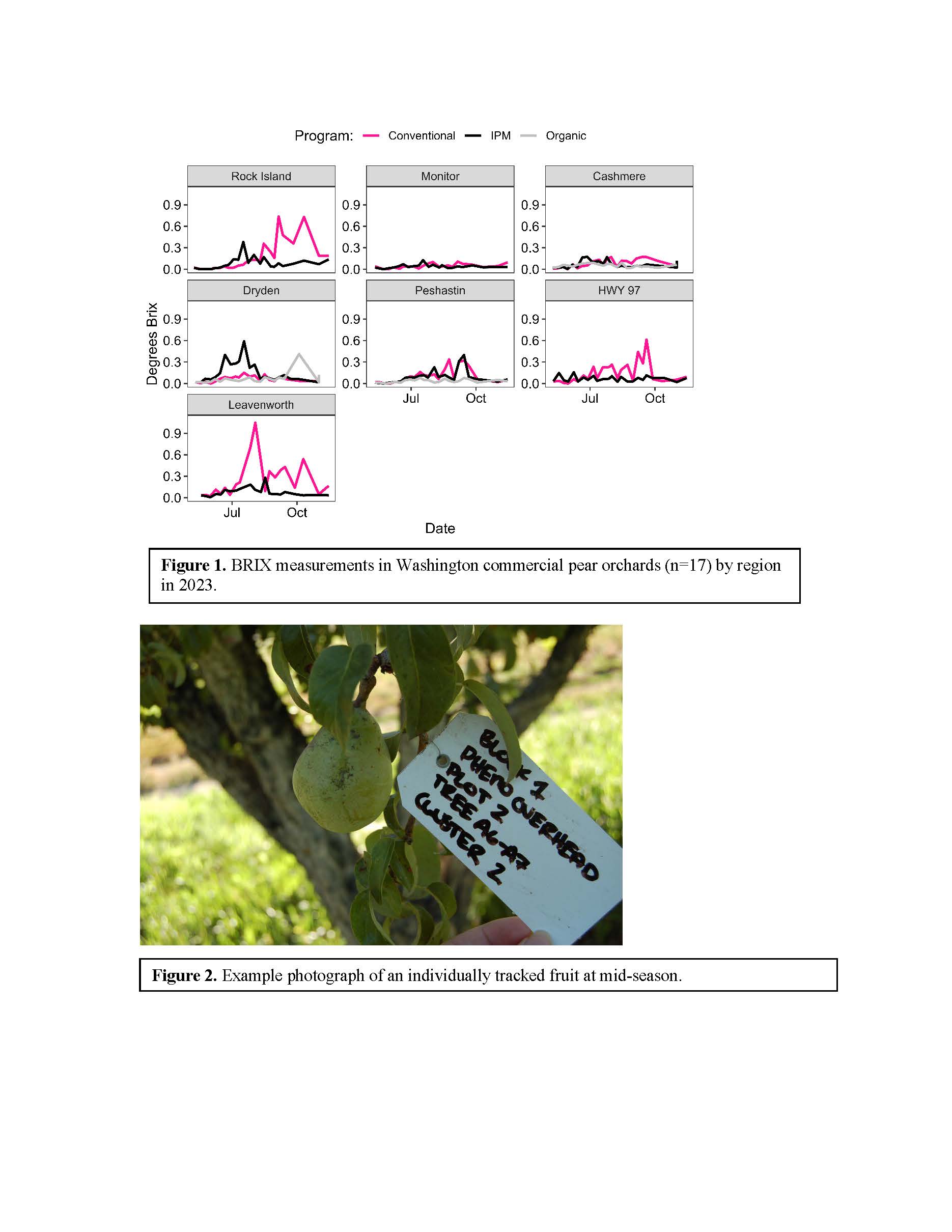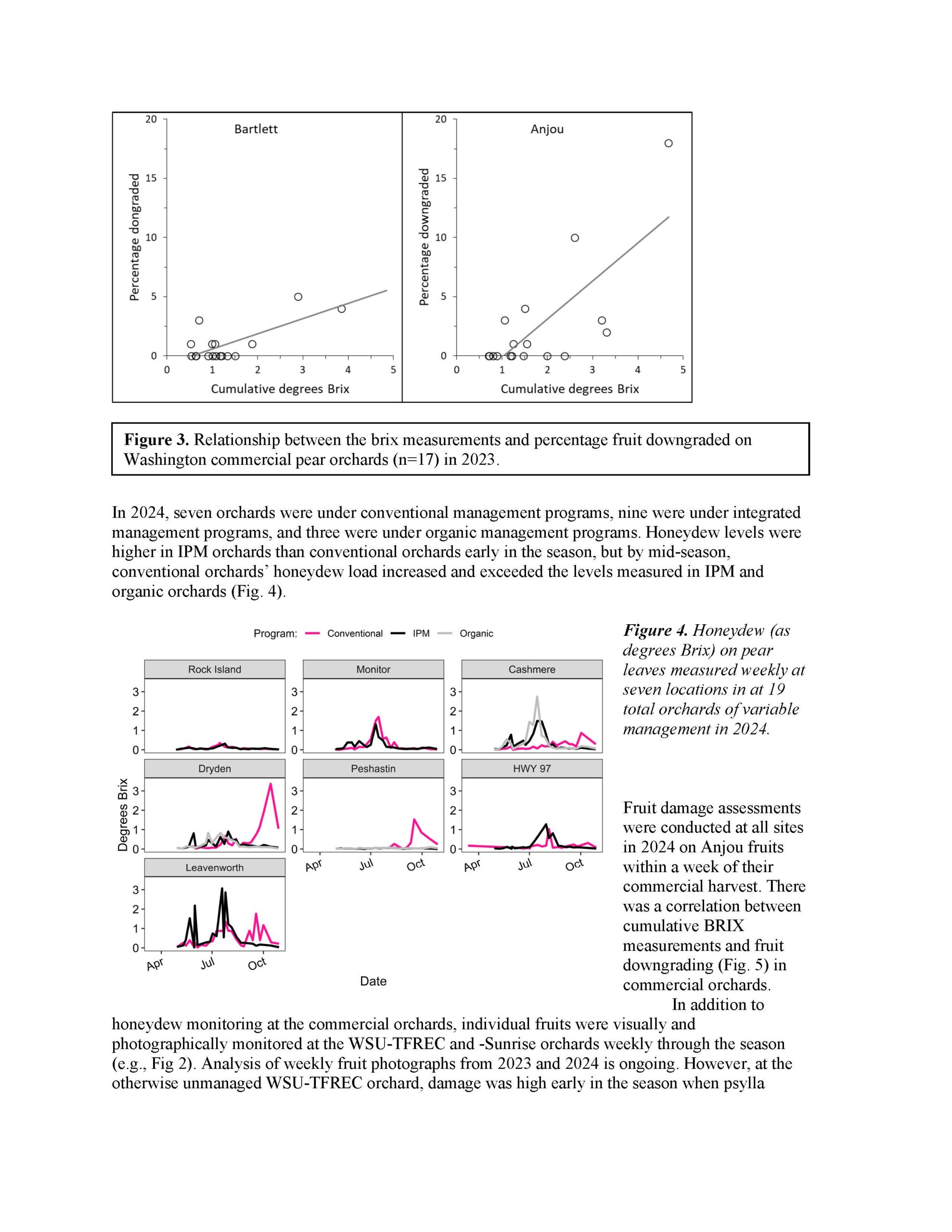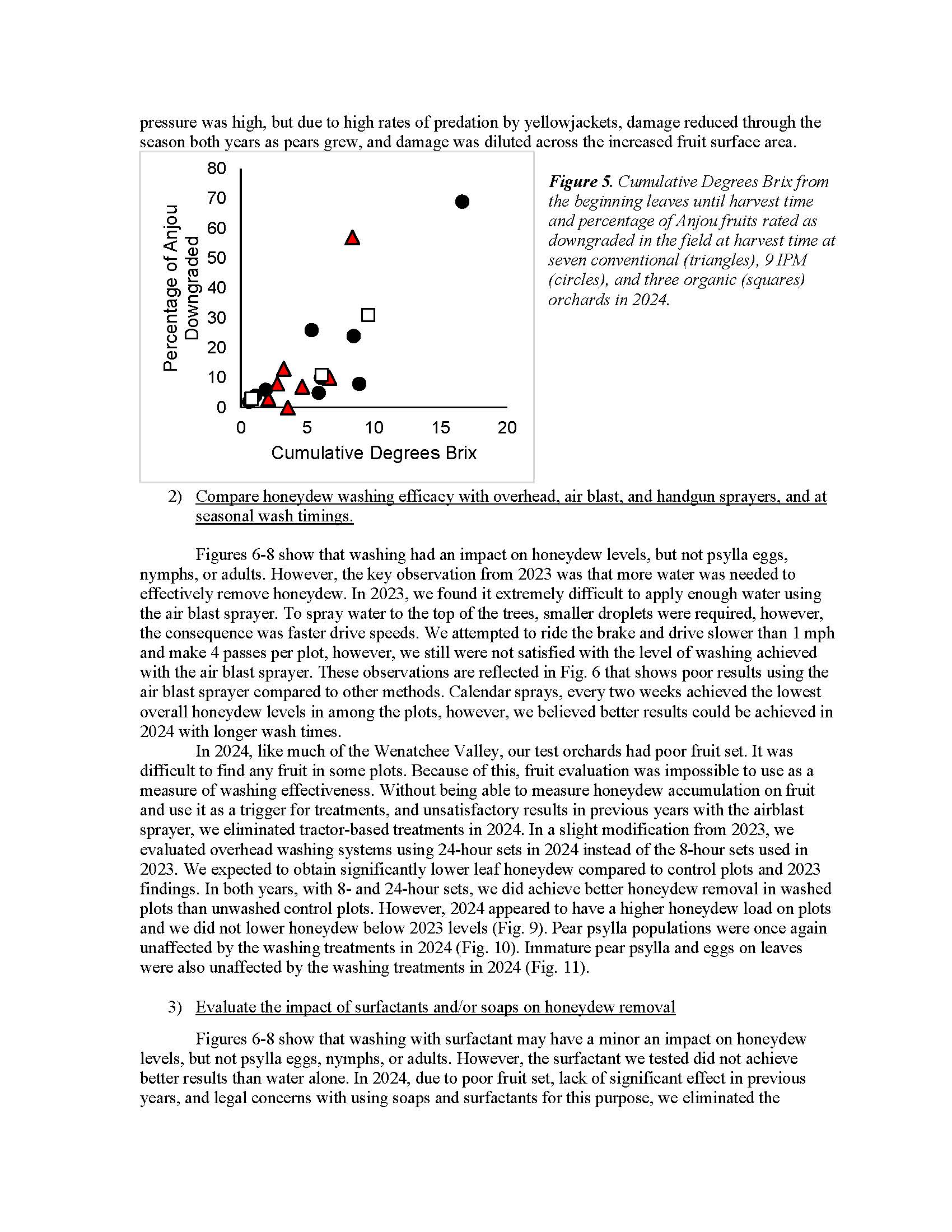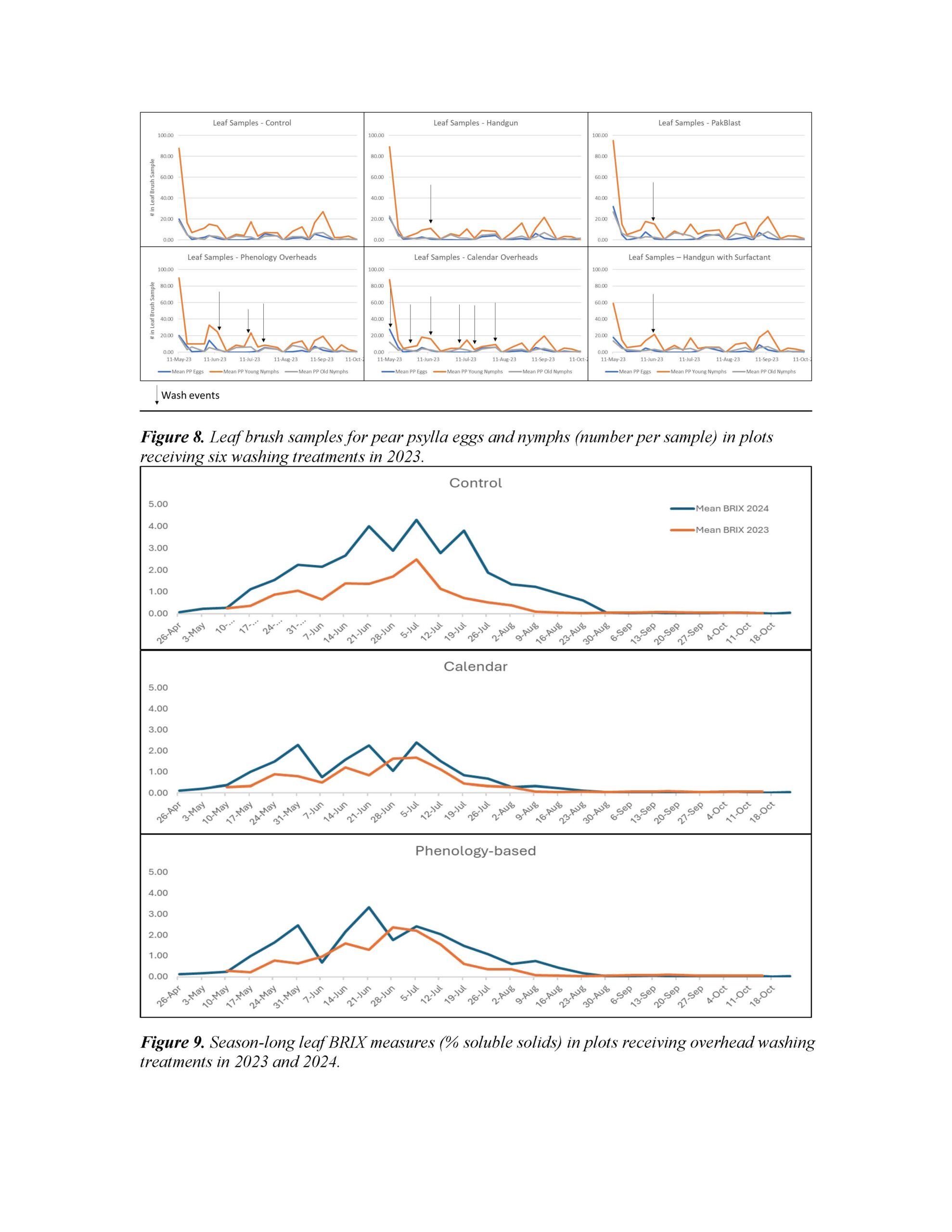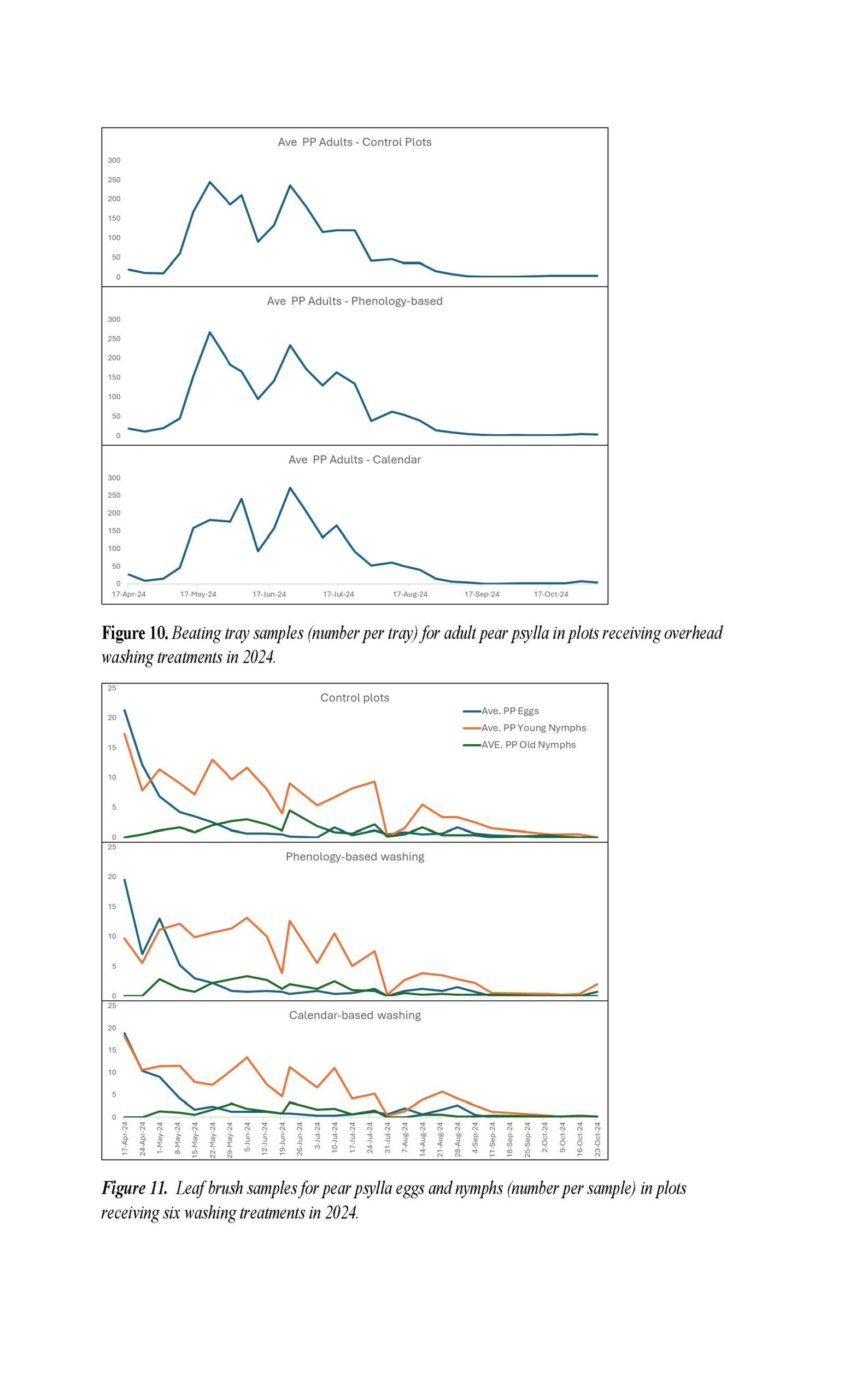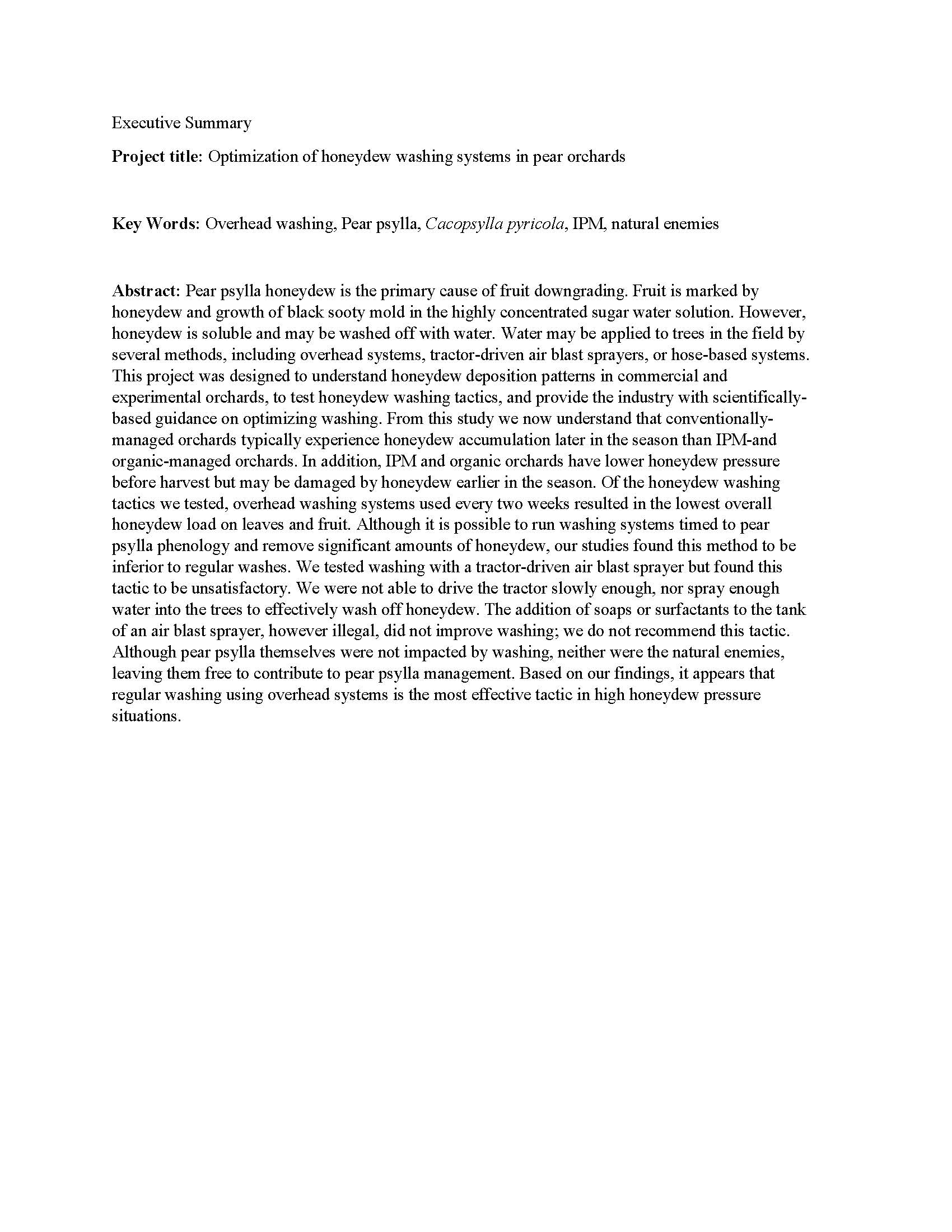Optimization of Honeydew Washing Systems in Pear Orchards
Author: RT Curtiss
Published: 2025
Summary: Pear psylla honeydew is the primary cause of fruit downgrading. Fruit is marked by honeydew and growth of black sooty mold in the highly concentrated sugar water solution. However, honeydew is soluble and may be washed off with water. Water may be applied to trees in the field by several methods, including overhead systems, tractor-driven air blast sprayers, or hose-based systems. This project was designed to understand honeydew deposition patterns in commercial and experimental orchards, to test honeydew washing tactics, and provide the industry with scientifically-based guidance on optimizing washing. From this study we now understand that conventionally-managed orchards typically experience honeydew accumulation later in the season than IPM-and organic-managed orchards. In addition, IPM and organic orchards have lower honeydew pressure before harvest but may be damaged by honeydew earlier in the season. Of the honeydew washing tactics we tested, overhead washing systems used every two weeks resulted in the lowest overall honeydew load on leaves and fruit. Although it is possible to run washing systems timed to pear psylla phenology and remove significant amounts of honeydew, our studies found this method to be inferior to regular washes. We tested washing with a tractor-driven air blast sprayer but found this tactic to be unsatisfactory. We were not able to drive the tractor slowly enough, nor spray enough water into the trees to effectively wash off honeydew. The addition of soaps or surfactants to the tank of an air blast sprayer, however illegal, did not improve washing; we do not recommend this tactic. Although pear psylla themselves were not impacted by washing, neither were the natural enemies, leaving them free to contribute to pear psylla management. Based on our findings, it appears that regular washing using overhead systems is the most effective tactic in high honeydew pressure situations.
Keywords:

